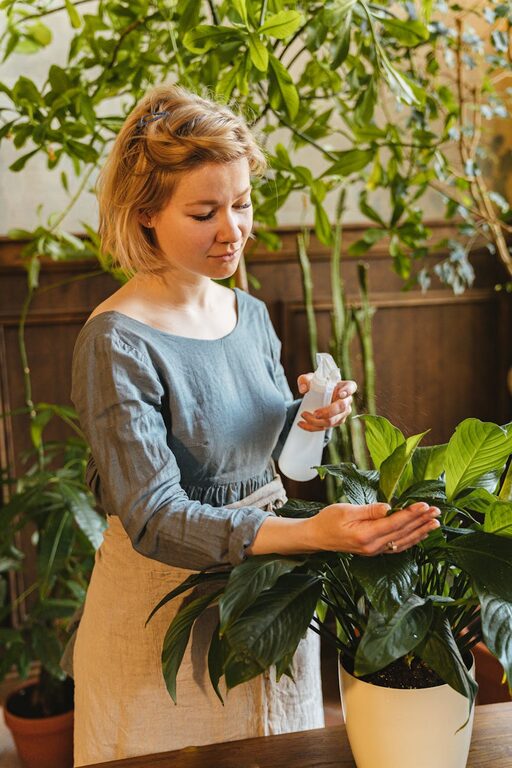
Essential Tips for Keeping Your Houseplants Healthy and Thriving
Bringing houseplants into your home can add beauty, improve air quality, and create a calming atmosphere. However, keeping them healthy requires understanding their needs and providing proper care. Whether you’re new to indoor gardening or want to improve your plant care routine, these tips will help your houseplants flourish.
Understanding Your Houseplant's Needs
Different houseplants have different requirements. Before bringing a plant home, it’s important to learn about its specific light, water, and temperature preferences.
Know Your Plant’s Light Requirements
Houseplants generally fall into three categories based on light:
– Bright, indirect light: Many popular plants like pothos and fiddle leaf figs prefer bright but filtered sunlight.
– Low light: Plants such as snake plants and ZZ plants tolerate lower light levels and can thrive in shaded corners.
– Direct sunlight: Succulents and cacti need several hours of direct sunlight to remain healthy.
Place your plants accordingly to avoid issues such as leaf burn or stunted growth.
Watering Wisely
Overwatering is the most common cause of houseplant problems. Unlike outdoor plants, indoor plants often require less water.
– Check the soil moisture before watering by feeling the top inch. If it’s dry, it’s usually time to water.
– Use pots with drainage holes to prevent water from sitting at the bottom, which can cause root rot.
– Adjust watering frequency based on the season; many plants need less water during winter.
Humidity and Temperature
Most houseplants are tropical species and appreciate humidity.
– Increase humidity by misting plants, using a pebble tray with water, or placing a humidifier nearby.
– Keep plants away from drafts or heaters that can cause temperature fluctuations.
– Most houseplants prefer temperatures between 65°F and 75°F (18°C–24°C).
Regular Maintenance for Healthy Plants
Caring for your plants goes beyond watering and sunlight. Regular maintenance helps prevent problems and encourages growth.
Pruning and Trimming
– Remove yellow, brown, or dead leaves promptly to keep plants looking tidy.
– Trim leggy growth to promote bushier, fuller plants.
– Use clean, sharp scissors or pruning shears to avoid damage.
Fertilizing
Plants need nutrients to grow well, especially if they remain in the same soil for a long time.
– Use a balanced, water-soluble fertilizer every 4–6 weeks during the growing season (spring and summer).
– Reduce or stop fertilizing during the plant’s dormant period (typically fall and winter).
– Follow the instructions on the fertilizer package carefully to avoid overfeeding.
Repotting
As houseplants grow, they may outgrow their pots and need more space.
– Repot when roots are visible on the soil surface or coming out of drainage holes.
– Choose a pot that’s 1–2 inches larger in diameter and has good drainage.
– Use fresh potting mix suited for the type of plant.
Preventing and Managing Common Problems
Healthy plants can still face challenges. Being proactive helps keep pests and diseases under control.
Watch for Pests
Common houseplant pests include spider mites, aphids, mealybugs, and scale insects.
– Inspect plants regularly, especially the undersides of leaves.
– If you notice pests, rinse plants with water or use insecticidal soap.
– Isolate affected plants to prevent spreading.
Avoid Diseases
Root rot and fungal infections often result from overwatering or poor ventilation.
– Water appropriately and allow soil to dry out between watering.
– Avoid overhead watering that keeps leaves wet for long periods.
– Ensure good air circulation around plants.
Creating a Plant-Friendly Environment
Simple adjustments at home can make a big difference in plant health.
Lighting Solutions
If you don’t have ideal natural light, consider supplementing with grow lights. LED grow lights are energy-efficient and available in various sizes for all plant needs.
Plant Rotation
Rotate your plants every week or two to ensure all sides receive equal light. This helps maintain balanced growth and prevents leaning.
Grouping Plants
Plants can benefit from being grouped together as they create a mini-microclimate with higher humidity levels.
Tips for Beginners
Starting with easy-to-care-for plants can build your confidence.
– Try resilient plants like pothos, snake plant, or spider plant.
– Use self-watering pots to simplify watering routines.
– Keep a plant care journal to track watering and feeding schedules.
—
Caring for houseplants requires attention and patience, but the rewards are worth it. By following these tips, you’ll create a healthy environment where your plants can thrive and add natural beauty to your space. Happy gardening!
